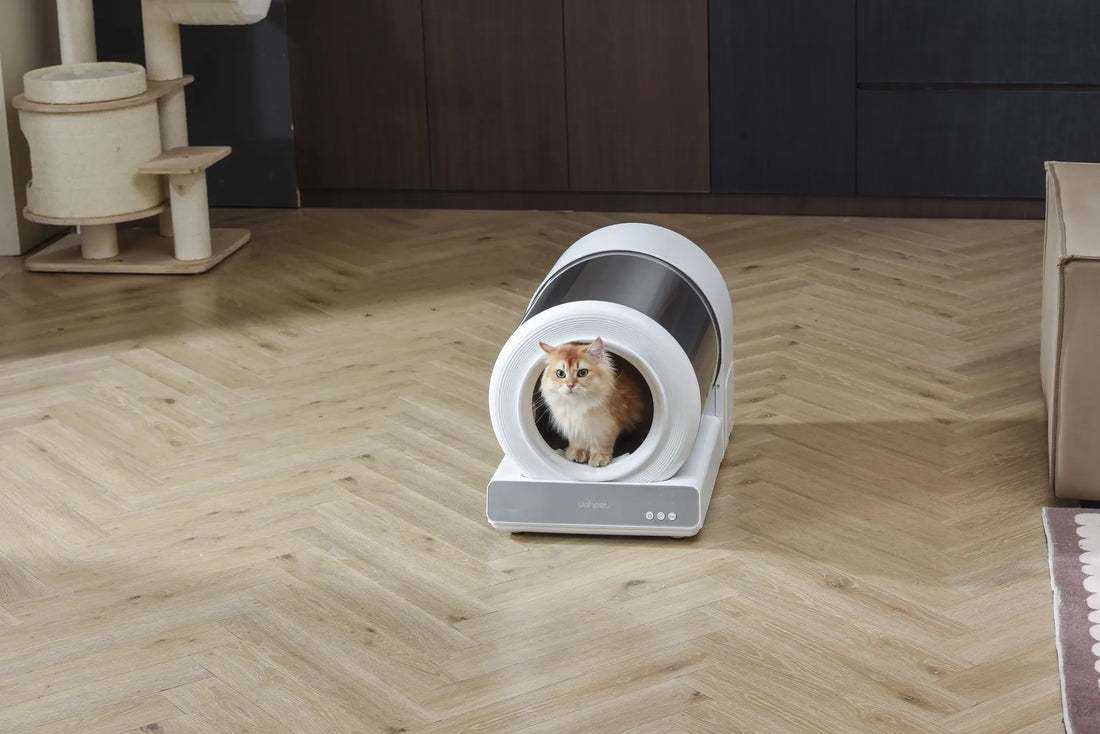Introducing a self-cleaning litter box to your cat can be a game-changer for both you and your feline friend. However, cats are creatures of habit, and transitioning to a new type of litter box can sometimes be a challenge. This article will guide you through the process of helping your cat adapt to a self-cleaning litter box, ensuring a smooth and stress-free experience for everyone involved.
Understanding Your Cat's Behavior
Cats are naturally cautious animals, and any change in their environment can cause stress or anxiety. When introducing a self-cleaning litter box, it's important to understand your cat's behavior and preferences. Cats are very particular about their litter boxes, and any sudden changes can lead to avoidance or accidents. Take the time to observe your cat's habits and preferences, as this will help you make the transition smoother.
Choosing the Right Self-Cleaning Litter Box
Not all self-cleaning litter boxes are created equal, and choosing the right one for your cat is crucial. Consider factors such as size, noise level, and ease of use. Some cats may be sensitive to noise, so opting for a quieter model can make a big difference. Additionally, ensure that the litter box is large enough for your cat to move around comfortably. A well-chosen litter box can make the transition much easier for your cat.
Gradual Introduction
One of the most effective ways to help your cat adapt to a self-cleaning litter box is to introduce it gradually. Start by placing the new litter box next to the old one, allowing your cat to explore it at their own pace. You can also place some of the old litter in the new box to make it more familiar. Over time, gradually increase the amount of time your cat spends using the new litter box, and eventually, you can remove the old one altogether.
Positive Reinforcement
Positive reinforcement is a powerful tool when it comes to training your cat. Whenever your cat uses the self-cleaning litter box, reward them with treats, praise, or affection. This will help create a positive association with the new litter box and encourage them to use it regularly. Be patient and consistent with your rewards, and your cat will soon start to prefer the new litter box.
Maintaining a Clean Environment
Cats are naturally clean animals, and they prefer a clean litter box. Ensure that the self-cleaning litter box is always in good working condition and that it is cleaned regularly. A dirty or malfunctioning litter box can deter your cat from using it. Additionally, keep the area around the litter box clean and free of clutter, as this can also affect your cat's willingness to use it.
Addressing Any Issues
If your cat is still hesitant to use the self-cleaning litter box, it's important to address any potential issues. Consider whether the litter box is in a quiet, accessible location, and whether it is the right size for your cat. You may also want to try different types of litter to see if your cat has a preference. If your cat continues to avoid the litter box, consult with a veterinarian to rule out any underlying health issues.
Patience and Persistence
Transitioning to a self-cleaning litter box can take time, and it's important to be patient and persistent. Cats may take a while to adjust to new changes, and it's essential to give them the time they need. Avoid forcing your cat to use the new litter box, as this can create negative associations. Instead, continue to encourage and reward them for using it, and eventually, they will adapt.
Helping your cat transition to a self-cleaning litter box can be a rewarding experience for both you and your feline friend. By understanding your cat's behavior, choosing the right litter box, and using positive reinforcement, you can make the process smooth and stress-free. Remember to be patient and persistent, and soon your cat will be happily using their new self-cleaning litter box. With these tips, you'll be well on your way to a cleaner, more convenient litter box experience for both you and your cat.














